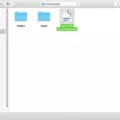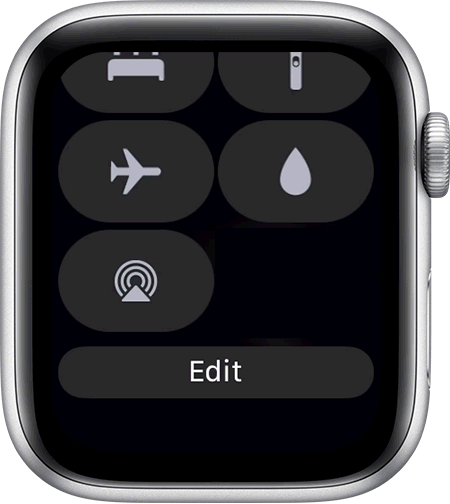The iPad has become an essential tool for many individuals, allowing them to work, create, and stay connected on the go. One of the key features of the iPad is its ability to open and edit various types of documents, including Microsoft Word files. In this article, we will explore how to convert Word documents to Pages format on the iPad.
To begin, let’s take a look at how to open documents on the iPad. Whether your files are stored on your iPad, in iCloud Drive, on connected servers, or in third-party storage providers, accessing them on your iPad is a breeze. Simply locate the document you wish to open and tap on it to open it in the appropriate app. In the case of Word documents, they will open in the pre-installed Microsoft Word app on your iPad.
Now, if you want to convert a Word document to Pages format, follow these steps:
1. Open the Word document you wish to convert in the Microsoft Word app on your iPad.
2. Once the document is open, tap on the “File” option in the top menu bar.
3. From the drop-down menu, select the “Export To” option.
4. A new menu will appear, offering several formats to convert the document to. Choose the “Pages” option.
5. After selecting the “Pages” option, you will be prompted to choose a name and location to save the converted file. Provide a name and select a location that you can easily access.
6. tap on the “Save” button to initiate the conversion process. The Word document will now be converted to Pages format and saved in the specified location.
It’s important to note that the converted Pages document may not retain all the formatting and features of the original Word document. It is always a good idea to review the converted document and make any necessary adjustments or edits before finalizing it.
If you need to import a document from your computer to your iPad, you can do so using the iTunes File Sharing feature. Here’s how:
1. Connect your iPad to your computer using the appropriate cable.
2. Open iTunes on your computer and select your iPad from the device list.
3. Click on the “Apps” tab in the iTunes sidebar.
4. Scroll down to the “File Sharing” section.
5. In the left column, click on “Pages” to select it.
6. In the right column, click on the “Add” button at the bottom.
7. Navigate to the document you want to import to your iPad and click “Open”.
8. The document will now be transferred to your iPad and can be accessed in the Pages app.
By following these simple steps, you can easily convert Word documents to Pages format on your iPad, as well as import documents from your computer. The versatility of the iPad allows you to work on your documents wherever you go, ensuring productivity and convenience.
Remember, the iPad offers a range of features and functionalities that can greatly enhance your productivity. Explore the various options available and make the most out of your iPad’s capabilities.
Can I Open A Word Document In Pages On IPad?
You can open Word documents in Pages on your iPad. Pages is Apple’s word processing application and it supports the Microsoft Word format. This means that you can easily access and view Word documents on your iPad using Pages.
To open a Word document in Pages, follow these steps:
1. Launch the Pages app on your iPad.
2. In the document manager, tap on the “+” button to create a new document.
3. From the template chooser, scroll down and tap on the “Import Word Document” option. This will allow you to import a Word document into Pages.
4. You will be presented with a file picker interface. Here, you can choose the location where your Word document is saved. You can select a document saved on your iPad, in iCloud Drive, on connected servers, or in other third-party storage providers.
5. Once you have selected the Word document you want to open, tap on the document to import it into Pages.
6. Pages will convert the Word document into its own format, so you can edit and work with it in Pages.
7. The imported document will now open in Pages, and you can view and edit it as needed. Pages offers a range of editing tools and features that you can use to customize the document according to your preferences.
It’s worth noting that while Pages does a good job of preserving the formatting of Word documents, there may be some elements or advanced features in the original Word document that might not be fully supported or replicated in Pages. Therefore, it’s always a good idea to review the document after importing it to ensure that everything appears as intended.
Pages on iPad provides a convenient way to open and work with Word documents, allowing you to seamlessly transition between the two formats and access your documents on the go.

How Do I Convert A Word Document To Apple Pages?
To convert a Word document to Apple Pages, follow these steps:
1. Open the Word document you want to convert in Microsoft Word.
2. Click on the “File” option in the top menu bar.
3. From the drop-down menu, select “Export” or “Save As” (depending on your Word version).
4. In the export options, choose the “Pages” format. This will convert the document to a format compatible with Apple Pages.
5. Choose a location to save the converted file and give it a name.
6. Click on the “Save” button to start the conversion process.
7. Once the conversion is complete, you can close Microsoft Word.
8. Open Apple Pages on your Mac.
9. In Apple Pages, click on the “File” option in the top menu bar.
10. Select “Open” from the drop-down menu.
11. Locate the converted Pages file that you saved earlier and click on it to open.
12. The Word document will now be opened in Apple Pages, and you can edit and work with it as needed.
By following these steps, you can easily convert a Word document to Apple Pages format, allowing you to work with your document in Pages without any compatibility issues.
How Do I Import Documents Into Pages On IPad?
To import documents from your computer to Pages on your iPad, follow these steps:
1. Connect your iPad to your computer using a USB cable.
2. Open iTunes on your computer.
3. Click on the device icon that appears in the top left corner of the iTunes window.
4. In the left sidebar, click on “File Sharing”.
5. Scroll down to the “Apps” section and click on “Pages”.
6. In the right column, you will see a list of Pages-created documents already on your iPad.
7. To import a new document, click on the “Add” button at the bottom of the right column.
8. A file browser window will open. Navigate to the location on your computer where the document is saved.
9. Select the document you want to import and click on the “Open” button.
10. The document will then be added to the list of Pages documents on your iPad.
Please note that the imported document should be in a compatible format for Pages, such as .doc, .docx, .pdf, .txt, or .pages. If the document is in a different format, you may need to convert it to a compatible format before importing it into Pages.
Additionally, make sure you have the latest version of Pages installed on your iPad to ensure compatibility and access to all the features and functionalities.
Conclusion
The iPad is a versatile and powerful device that offers a wide range of features and capabilities. It provides a convenient way to access and manage documents, whether they are stored locally on the device, in iCloud Drive, on connected servers, or in third-party storage providers. With the ability to open and edit Microsoft Word documents, the iPad is a suitable tool for productivity and professional use.
The iPad also offers the option to import documents from a computer, making it easy to transfer files and continue working on the go. By utilizing the File Sharing feature, users can quickly and seamlessly import documents created in Pages or other compatible formats.
Furthermore, the iPad’s compatibility with various storage options, including external devices, allows for expanded storage capacity and flexibility. This is particularly useful for individuals who require additional space for their files or who prefer to keep their data separate from the device itself.
The iPad provides a user-friendly and efficient platform for document management and productivity. Its integration with various storage options and ability to open and edit popular file formats make it a valuable tool for professionals, students, and anyone in need of a portable and versatile device for their document-related needs.








